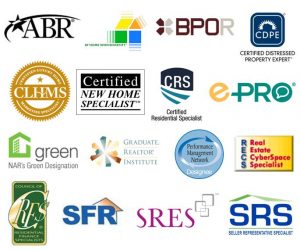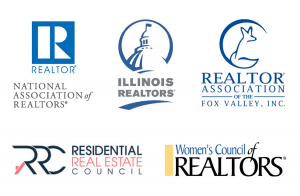 5 Surprising Ways to Save for a Down Payment on a Home
5 Surprising Ways to Save for a Down Payment on a Home
Published by: HouseLogic.com (Written by: Erik Sherman, Image by: Jacon Thomas/Offset), February 10, 2018
One of the biggest misconceptions of home buying? The 20% down payment. Here’s how to buy with a lot less down.
Buying your first home conjures up all kinds of warm and fuzzy emotions: pride, joy, contentment. But before you get to the good stuff, you’ve got to cobble together a down payment, a daunting sum if you follow the textbook advice to squirrel away 20% of a home’s cost.
Here are five creative ways to build your down-payment nest egg faster than you may have ever imagined.
1. Crowdsource Your Dream Home
You may have heard of people using sites like Kickstarter to fund creative projects like short films and concert tours. Well, who says you can’t crowdsource your first home? Forget the traditional registry, the fine china, and the 16-speed blender. Use sites like Feather the Nest and Hatch My House to raise your down payment. Hatch My House says it’s helped Americans raise more than $2 million for down payments.
2. Ask the Seller to Help (Really!)
When sellers want to a get a deal done quickly, they might be willing to assist buyers with the closing costs. Fewer closing costs = more money you can apply toward your deposit.
“They’re called seller concessions,” says Ray Rodriguez, regional mortgage sales manager for the New York metro area at TD Bank. Talk with your real estate agent. She might help you negotiate for something like 2% of the overall sales price in concessions to help with the closing costs.
There are limits on concessions depending on the type of mortgage you get. For FHA mortgages, the cap is 6% of the sale price. For Fannie Mae-guaranteed loans, the caps vary between 3% and 9%, depending on the ratio between how much you put down and the amount you finance. Individual banks have varying caps on concessions.
No matter where they net out, concessions must be part of the purchase contract.
Related: New Law Protects You from Surprise Closing Costs
3. Look into Government Options
The U.S. Department of Housing and Urban Development, or HUD, offers a number of homeownership programs, including assistance with down payment and closing costs. These are typically available for people who meet particular income or location requirements. HUD has a list of links by state that direct you to the appropriate page for information about your state.
HUD offers help based on profession as well. If you’re a law enforcement officer, firefighter, teacher, or EMT, you may be eligible under its Good Neighbor Next Door Sales Program for a 50% discount on a house’s HUD-appraised value in “revitalization areas.” Those areas are designated by Congress for homeownership opportunities. And if you qualify for an FHA-insured mortgage under this program, the down payment is only $100; you can even finance the closing costs.
For veterans, the VA will guarantee part of a home loan through commercial lenders. Often, there’s no down payment or private mortgage insurance required, and the program helps borrowers secure a competitive interest rate.
Some cities also offer homeownership help. “The city of Hartford has the HouseHartford Program that gives down payment assistance and closing cost assistance,” says Matthew Carbray, a certified financial planner with Ridgeline Financial Partners and Carbray Staunton Financial Planners in Avon, Conn. The program partners with lenders, real estate attorneys, and homebuyer counseling agencies and has helped 1,200 low-income families.
4. Check with Your Employer
Employer Assisted Housing (EAH) programs help connect low- to moderate-income workers with down payment assistance through their employer. In Pennsylvania, if you work for a participating EAH employer, you can apply for a loan of up to $8,000 for down payment and closing cost assistance. The loan is interest-free and borrowers have 10 years to pay it back.
Washington University in St. Louis offers forgivable loans to qualified employees who want to purchase housing in specific city neighborhoods. University employees receive the lesser of 5% of the purchase price or $6,000 toward down payment or closing costs.
Ask the human resources or benefits personnel at your employer if the company is part of an EAH program.
5. Take Advantage of Special Lender Programs
Finally, many lenders offer programs to help people buy a home with a small down payment. “I would say that the biggest misconception [of homebuying] is that you need 20% for the down payment of a house,” says Rodriguez. “There are a lot of programs out there that need a total of 3% or 3.5% down.”
FHA mortgages, for example, can require as little as 3.5%. But bear in mind that there are both upfront and monthly mortgage insurance payments. “The mortgage insurance could add another $300 to your monthly mortgage payment,” Rodriguez says.
Some lender programs go even further. TD Bank, for example, offers a 3% down payment with no mortgage insurance program, and other banks may have similar offerings. “Check with your regional bank,” Rodriguez says. “Maybe they have their own first-time buyer program.”
Not so daunting after all, is it? There’s actually a lot of help available to many first-time buyers who want to achieve their homeownership dreams. All you need to do is a little research — and start peeking at those home listings!
HouseLogic.com is Made Possible by REALTORS®
For the full article, visit HouseLogic.com at: https://www.houselogic.com/buy/first-time-home-buyer/down-payment-assistance/?site_ref=mosaic
5 Surprising Ways to Save for a Down Payment on a Home
Visit Christopher Tenggren’s Blog again soon at: http://HomesInTheFoxValley.com/blog
#HomesInTheFoxValley
@CTenggren












Speak Your Mind
You must be logged in to post a comment.